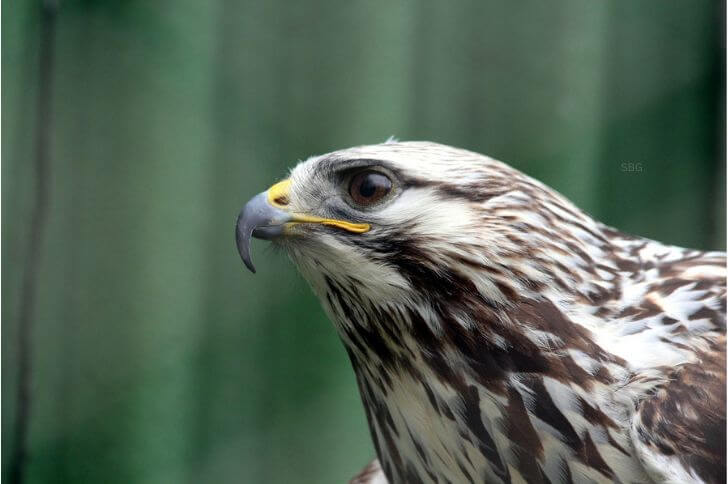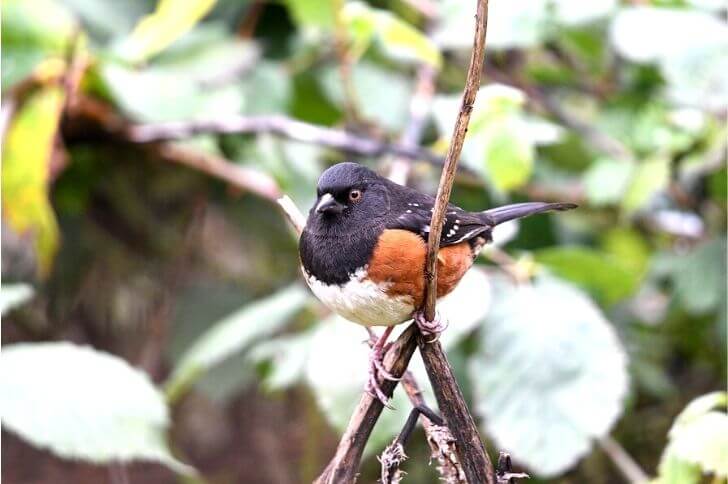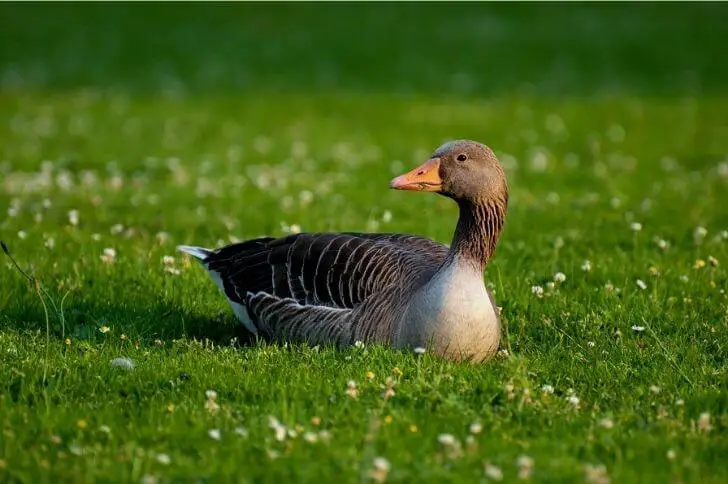San Diego has long been known for its stunning coastline and its diverse population of birds. Hawks are a majestic and graceful species of bird that have been observed in San Diego since the early 1800s. The city’s landscape provides these raptors with ample hunting grounds and nesting locations, making them a common sight among residents.
So what are the most common hawks in San Diego? Cooper’s hawks are common birds of prey in this county. They are found in urban areas as well as foothills. Other hawks include red-tailed hawks, red-shouldered hawks and Northern harriers. Below we’ll discuss their identification markers and where you can go to see them.
List of Hawks in San Diego
1. Red-tailed Hawk

Known for their excellent vision and their long lifespan, the red-tailed hawk calls San Diego County home. From coast to rural areas, this large bird of prey can often be heard; listen for its sharp “kee-eeer-arrr” sounds.
Identification:
There are three key features to look at to correctly identify a red-tailed hawk. One, check their plumage. These large hawks are brownish above and white below. Note the dark band on their belly. Their tail is wide and cinnamon-reddish, giving them their name.
Two, when hawk-watching, check its movement when it hunts. A red-tailed hawk will start by flapping and then gliding towards its prey. As it nears the prey, this hawk pushes its legs forward so it can catch the prey with its sharp talons.
Common prey include mice, rabbits, starlings, pheasants and ground squirrels.
Third, lastly listen to its calls; “kee-eeeer-arr” and “chwirk” during courtship.
These raptors typically inhabit open fields or woodlands but can also be found near human settlements, especially in urban areas where they can often be seen perched on fence poles or other elevated structures.
These San Diego hawks do not visit feeders. Their lifespan is about 30 years.
2. Broad-Winged Hawks

Broad-winged hawks are rare in San Diego. But you can spot a few birds during their fall migration.
Identification:
With a wingspan that can reach up to 40 inches, these medium-sized hawks have broad wings and short tails, and they fly with a slow, steady wing beat. Their distinctive white patches on their underwings make them easily identifiable in flight.
The rest of their body is brownish with barring on their breasts. Juveniles are lighter in plumage with heavy barring. Their “kee-eee” sounds also make identification easy.
These raptors are found primarily in heavily wooded areas like forests and swamps but will also inhabit open habitats such as grasslands or meadows during migration season.
Broad-winged hawks eat small mammals, reptiles, insects and other birds as part of their diet. They hunt by perching on high branches or hovering high above an area before plunging down onto unsuspecting prey below.
These birds have been seen at Point Loma. But note, they are very rare in this county.
3. Ferruginous Hawks

Weighing up to 80 oz, ferruginous hawks are one of the largest birds of prey in San Diego. These majestic birds show up in winter; about 150 birds.
Identification:
This raptor is a large bird with a wingspan of up to five feet, and has distinct rusty-red feathers on its back and wings, as well as a white underside.
They prefer open grasslands and San Diego offers plenty of space for them to hunt during winter. They visit the county from October to March. Check around Santa Maria Valley and Borrego Springs.
Like other hawks they eat prairie dogs and cottontail rabbits. During their breeding season they raise clutches of 1-8 hawk babies.
4. Red-shouldered Hawks

Red-shouldered hawks are all-year residents in San Diego; found in the northern part of the county. They are interesting birds of prey to watch.
Identification:
These birds of prey are known for their loud “kee-aah” call and their reddish shoulder stripes, which give them their name. The rest of their upperparts are reddish-brown including the head. Unlike other hawks, their eyes range from yellow in young species turning orangish-brown in maturity.
Red shouldered hawks typically inhabit wooded areas near rivers, streams, swamps or lakes. They feed mainly on small mammals such as mice, voles and rabbits but also eat insects, amphibians, reptiles and other birds.
During mating season, red-shouldered hawks can be seen performing aerial courtship displays with multiple dives, loops and figure eights as they soar above their nesting area. The nests are usually made from sticks and twigs lined with bark strips or dry grasses.
They raise a brood of 3-5 chicks. Nesting lasts for up to 49 days and
5. Sharp-shinned Hawks

With piercing red eyes, sharp-shinned hawks are smaller compared to other hawks in San Diego.
Identification:
These birds of prey have adapted well to urban and suburban environments, making them an increasingly common sight in backyards. In San Diego, they can be spotted on the coastal slope during winter.
Although small by hawk standards, these predators can reach up to 13 inches long with a wingspan of up to 22 inches. The sharp-shinned hawk has distinctive red eyes, grayish blue feathers on top, and barred underneath. Note the long white-barred tail.
Their diet is made up of songbirds. They are known to hunt falcons, woodpeckers, quails and doves. Occasionally sharp-shins eat small rodents.
6. Cooper’s Hawks

Most common in oak woodlands and eucalyptus groves, cooper’s hawks are magnificent birds of prey that can be found all-year round in San Diego California.
Identification:
They are part of the Accipitridae family, which includes other raptors such as eagles, harriers, and kites. Cooper’s hawks are one of the most easily recognizable raptors due to their unique coloration pattern that consists of a black cap, pale cheeks and grayish-brown upperparts. Additionally, they have a whitish underside with reddish barring.
In San Diego they nest on beeches, oaks, and pines. Male Coopers find nesting spots and build the nest out of sticks measuring about 8 inches across.
The female lays 2-6 bluish white eggs that are incubated for up to 36 days. They consume mice, squirrels, and rabbits, as well as birds like doves, starlings, bats, and quail.
Related Read: Check different yellow birds in San Diego
7. Rough-Legged Hawks

Rough-legged Hawks have occasionally been spotted in San Filipe and Borrego. These birds of prey are seen infrequently in this county in winter months.
Identification:
They are known for their broad wings and long tail feathers, which they use to soar across the sky while searching for small mammals. They are dark brown with beautiful whitish underparts. Like the red-tailed hawk, they have a band around their belly but are darker and visible in flight.
These birds have a unique flight pattern that consists of short bursts followed by long glides with their wings outstretched, allowing them to take advantage of the thermals rising in the atmosphere.
They eat voles, mice and shrews. These hawks live up to 17 years.
8. Northern Harrier

Northern harriers look more like owls than hawks. A good number is found in San Diego throughout the year. However, this bird species is found in large numbers over winter.
Identification:
With its long, slender wings and unique hunting techniques, the northern harrier is an extraordinary species to witness in flight. The adult is brown with a rounded tail.
Note its yellow eyes. Also females have whitish breasts and bellies with brown streaking. Their calls include sharp “kek” notes.
These incredible hunters prefer to inhabit open habitats such as grasslands or wetlands where they can easily search for prey from high above the ground. While they usually hunt alone or in pairs during migration season, they will often form large groups when gathering food during winter months.
9. Northern Goshawk

Northern goshawks are very rare in San Diego. Few vagrants have been spotted over the years.
Identification:
These birds of prey are larger than sharp-shins but smaller than ferruginous hawks. An adult is about 20.9-25.2 inches and span up to 46 inches.
These birds have a distinctive dark gray back, light gray and barred underparts, as well as a black crown and white eye brows. They have long legs and sharp talons that aid them in hunting jackrabbits, squirrels, northern flickers, woodpeckers and bluejays.
Northern goshawks are monogamous and usually mate for life. These raptors build nests high up in tall trees or on cliff ledges to protect their chicks from predators. During nesting season females will lay between two to four eggs which hatch after about 30-35 days. The young depend entirely on their parents for food until they reach independence at around 10 weeks old.
10. Zone-tailed Hawks
Zone-tailed hawks are short-distance migrants. And during their migration period, a few birds make a pit stop in California.
Identification:
These birds have striking plumage, with black and white under wings and tail feathers that show off their zonation pattern. The upperparts are all black with a two colored beak. Some new birders confuse it with the turkey vulture.
Zone tailed hawks typically hunt during the day like most other diurnal raptors, preferring open fields or savannas. They capture small animals with their sharp talons and powerful beaks.
In terms of habitat preference, zone-tailed hawks prefer semi-deserts or brushy areas near streams or rivers where they can easily hide from predators such as larger raptors or coyotes.
11. Swainson’s Hawks

Another winter visitor to San Diego County is the Swainson’s Hawk. You can better your chances of watching them by visiting El Centro, Borrego Valley and Warner springs.
Identification:
These majestic birds have an impressive wingspan that can measure up to 54 inches, allowing them to soar through the skies with ease. Swainson’s hawks prefer to inhabit open grasslands and deserts, where they have easy access to food sources like wild rabbits and snakes.
They have dark brown upperparts and a reddish-brown chest. Also check the belly, it is whitish. Their eyes and feet are yellow. Also listen to the loud “kreeee” calls.
FAQs
What is the most common hawk in San Diego?
Red-tailed hawks are the most common types of hawks in San Diego. You can watch them in Santa Maria Valley, Warner Valley, Camp Pendleton, and Anza-Borrego desert.
What is the largest hawk in San Diego?
Ferruginous hawks are one of the largest birds of prey in San Diego. They boast of 5 feet wingspan and a 24.3 to 45.9 body mass.
What kind of hawks are in San Diego?
- Red-tailed hawks
- Ferruginous hawks
- Northern harriers
- Broad-winged hawks
- Sharp-shinned hawks
- Red-shouldered hawks
Where do hawks live in San Diego?
Some hawks like red-tailed hawks, cooper’s hawks and red-shouldered hawks are all year residents. They prefer areas with extensive grasslands where they can hunt with ease.
What is the most common bird in San Diego?
Other common backyard birds of San Diego include cardinals, buffleheads, lark buntings, mountain chickadees, sandhill cranes, and mourning doves.
Sources:
https://en.wikipedia.org/wiki/Red-shouldered_hawk
https://www.audubon.org/field-guide/bird/red-tailed-hawk
https://ebird.org/species/norhar2
Hi fellow bird watcher. Welcome to our small corner of the world. At the spanishbirdguides.com our mission is to share with other bird watchers the things we love about birds, where to go bird watching within the United States, and more. I’d also love to hear from you. Feel free to contact me about your bird watching escapades, share videos, photos and more.


